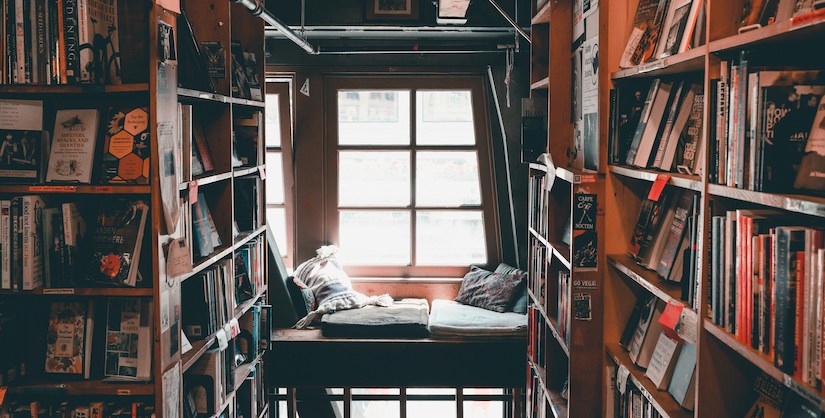Nonfiction. The very term conjures images. Dry facts, historical accounts, and scientific reports. But what if the lines between fact and storytelling are blurred? A captivating genre that reads more like a novel than a textbook? Enter literary nonfiction. A compelling world where truth meets artistry, and the real becomes riveting.
What is literary nonfiction?
Literary nonfiction is also known as creative nonfiction. It defies the traditional boundaries of factual writing. It delves into true stories, historical events, and personal experiences. It weaves them with the narrative techniques and stylistic flourishes more commonly associated with fiction. Think vivid descriptions, evocative language, and character development. All are employed to illuminate the complexities of the real world.
This fusion of fact and artistry has been around for a while. From the philosophical musings of Montaigne's 'Essays' to the social commentary of George Orwell's 'Down and Out in Paris and London'. Authors have long explored the intersection of truth and storytelling. However, the term 'literary nonfiction' gained prominence in the latter half of the 20th century. Writers like Truman Capote, Norman Mailer, and Joan Didion pushed the boundaries of the genre.
Why choose literary nonfiction?
So, why opt for literary nonfiction over traditional journalism or academic writing? Here are some key reasons:
- Engagement. Literary nonfiction electrifies facts. By employing narrative techniques, it draws readers in. It makes complex topics more accessible and engaging. Look at Oliver Sacks's ‘The Man Who Mistook His Wife for a Hat’. Neurological case studies become tales of human resilience and the power of the mind.
- Emotional connection. Literary nonfiction doesn't shy away from the emotional core of a story. Authors can delve into the motivations, fears, and desires of individuals caught up in the topic. Historical events, scientific discoveries, or personal journeys. This emotional connection allows readers not just to understand the 'what'. It’s also the 'why' behind the facts. This fosters empathy and a deeper understanding of the subject matter.
- Multiple perspectives. Journalism often presents a single, objective viewpoint. Literary nonfiction can incorporate multiple perspectives. This allows readers to engage with different sides of an issue. They can grapple with conflicting narratives and form their own conclusions. For instance, John Krakauer's 'Into Thin Air'. This chronicles the Mount Everest disaster. It weaves together the experiences of climbers, guides, and rescue personnel. This gives readers a multifaceted view of the tragedy.
The allure of the ambiguous: ethical challenges
The marriage of fact and artistry has undeniable benefits. But it also raises questions about the nature of truth in literary nonfiction. Here are some challenges to consider:
- Subjectivity. The author's voice and perspective are central to literary nonfiction. This inevitably introduces subjectivity into the narrative. Events and experiences are filtered through the author's lens. This potentially shapes the reader's perception of the truth. Consider Rebecca Solnit's 'Men Explain Things to Me'. This is a collection of essays exploring gender power dynamics. Her anecdotes are powerful. Some might argue that these are subjective experiences and not necessarily representative of all women. However, many women can relate.
- Creative license. Literary nonfiction is not about presenting bare facts. Authors employ creative techniques like:
- Scene construction
- Dialogue
- Character development
These elements enhance readability. But they raise questions about the line between factual representation and artistic embellishment. Did a conversation truly play out exactly as described? Did the author fabricate internal monologues to enhance a character's portrayal? The ambiguity can be both intriguing and unsettling.
- Accuracy concerns. The reliance on personal narratives and subjective interpretations can lead to accuracy concerns. Literary nonfiction authors generally strive for truthfulness. Inevitably, memories can be unreliable. Eyewitness accounts can be subjective. Readers need to approach the genre with a critical eye. Consider the author's background, potential biases, and the sources used for research.
Navigating the genre
The potential for subjectivity and creative license doesn't negate the value of literary nonfiction. Here are some tips for approaching the genre critically:
- Research the author. Learn about the writer's background, biases, and previous work. This context can help you understand their perspective and potential slants within the narrative.
- Consider the sources. Look for authors who use credible sources to substantiate their claims. Especially for historical events or scientific topics.
- Read with a critical eye. Don't simply accept everything as fact. Question the author's choices. Note the evidence presented. Be aware of potential biases shaping the narrative.
Literary nonfiction offers a unique lens on the world. It allows us to explore complex realities through the power of storytelling. It invites us to both learn about topics and feel the emotional weight of these experiences. By blurring the lines between fact and fiction, it fosters a deeper connection with the subject matter. This prompts us to question, analyse, and ultimately, form our own understanding of the truth.
Case studies
To truly appreciate the power of literary nonfiction, let's delve into some notable examples.
Truman Capote's 'In Cold Blood'
This groundbreaking work of investigative journalism redefined the genre. Capote meticulously researched the Clutter family murders. He wove factual details with an intimate portrayal of the victims, perpetrators, and the surrounding community. The result is a chilling exploration of multiple themes. Violence, the American psyche, and the ethical complexities of storytelling.
Susan Orlean's 'The Orchid Thief'
This is a captivating blend of true crime and botanical exploration. It follows the bizarre story of orchid poacher John Laroche. Orlean goes beyond the crime itself. She delves into the world of orchid collectors and enthusiasts. The book raises questions about obsession, desire, and the value placed on the natural world.
Ta-Nehisi Coates's 'Between the World and Me'
This powerful letter to Coates's son explores the realities of being Black in America. It weaves personal anecdotes with historical accounts of racial injustice, creating a poignant and thought-provoking exploration of race, identity, and the struggle for freedom.


